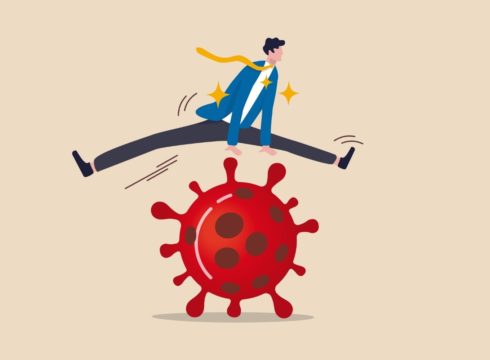As the lockdown progressed, several startups worked diligently to bridge this gap between education and skill requirement for companies
While digital transformation is not an outcome of the pandemic, it has grown swiftly in the past six to eight months and falls under the hyper-acceleration hypothesis segment
Businesses need to be agile and adapt intelligently and swiftly to meet revised consumer needs and stay relevant
Inc42 Daily Brief
Stay Ahead With Daily News & Analysis on India’s Tech & Startup Economy
As the country continues to make its way out of the lockdown imposed to combat the Covid-19 pandemic, businesses continue to reel under its impact. The year witnessed a massive economic disruption as hundreds of businesses were forced to shut down, while for others remote working and digital operations became the norm. In this ever-changing environment, what we witness is a mixed bag – hyper-acceleration of certain hypothesis, deceleration in certain industries and sectors, emergence of new categories and perhaps sunset of a few.
To be able to spot the right trends in each of these buckets becomes a critical skill in determining the direction a business would take – differentiating the real from the herd, what to sustain and which ones are more of a mirage.
As businesses evaluate their plans to identify the most optimal solution for a post-pandemic world, one of the things they need to do answer the difficult questions. Addressing concerns on whether markets and geographies it has been serving remain relevant, which core technology and business practices need to be modified, how can the team be best enabled to keep delivering under changing norms.
What are the changes in consumer behaviour, how does she wishes to be served in the changing paradigm, what are the new practices to adopt – what is required is an authentic, unbiased and goal-oriented approach, identify the signals and weak trends, catch them early and scrutinize them continuously to understand their impacts.
A prime example of this is the huge waves being created by edtech companies recently. The past few months led to millions of consumers adopting to a very different format of gaining knowledge, for instance use of virtual reality in Tier 2 and 3 cities of chemistry labs to give them a realistic experience, creating accessibility of education and knowledge to millions of children in remote parts of the country.
As the lockdown progressed, several startups worked diligently to bridge this gap between education and skill requirement for companies. But there are questions – can the education process transform itself to become a medium to provide skills for hiring, is it going to be offer menu–driven options ? While answers would come over time, ed-techs have created huge traffic for millions of students, with a low conversion rate – the challenge ahead for them is going to be able to identify innovative ways to monetize – charging a token fee per session, optional pay model, etc.
While digital transformation is not an outcome of the pandemic, it has grown swiftly in the past six to eight months and falls under the hyper-acceleration hypothesis segment. A report by McKinsey Global in 2017 had predicted that by the year 2030 almost 375 Mn workers would have to update their skills to adapt to the new wave of automation and artificial intelligence.
Digital has really leapfrogged recently– exams being conducted online with two sets of video surveillance, tools like Microsoft Teams/Zoom becoming a household name, companies which could not think of non-F2F meetings have embraced digital with ease. This gives rise to many un-checked boxes, among others being affordable cybersecurity for small-to-medium enterprises. Even households would require protection from cyber fraud risks.
Wellness, immunity and telemedicine while have been spoken about a lot in the past but had low levels of adoption. This has drastically changed now. Physical, as well as mental wellness, are getting in the forefront and occupying increased mind-spaces. While these trends are likely to continue, people are unsure about what to consume and in what form.
Educating consumers becomes very critical here. Speaking about telemedicine, India’s healthcare system outside of the metros is in real shambles whether it is primary, secondary or tertiary. Digital if adopted well can turn out to be a big boon and a huge enabler in meeting the healthcare needs of the country. An opportunity of this magnitude should not be wasted.
One of the more critical trends where countries are to focus on is caring for the environment. Turning eco-friendly and adopting a 100% biodegradable packaging are not norms yet despite the obvious concerns.
While on one hand tonnes of waste continues to find its way into the oceans, on the other hand, consumers are getting increasingly conscious of the way they consume and live – they are actively looking out for green and clean products. Identifying ways to prevent waste creation at the source is a powerful way to address these concerns.
Covid-19 was a scenario nobody could have predicted. The current crisis is showing us situations which could not even be fathomed. Now is the need, more than ever, for businesses to be agile and adapt intelligently and swiftly to meet revised consumer needs and stay relevant.
Note: We at Inc42 take our ethics very seriously. More information about it can be found here.


